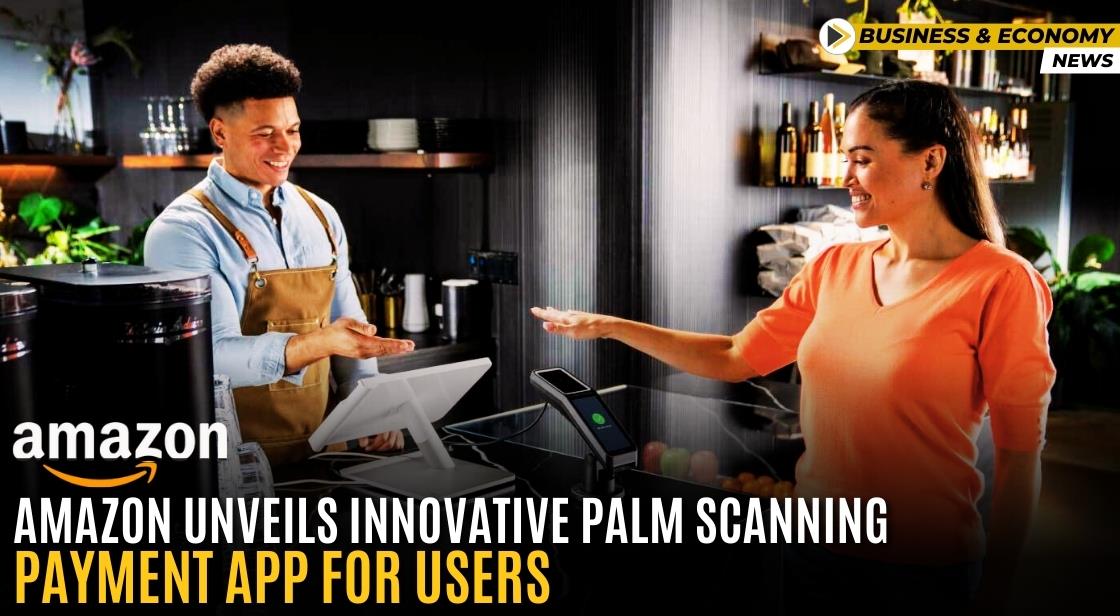Amazon Unveils Innovative Palm Scanning Payment App for Users
454

30 Mar 2024
4 min read
News Synopsis
Amazon introduces a new mobile app, Amazon One, allowing users to set up palm recognition for seamless payments directly from their smartphones.
The app is available for both iOS and Android devices, enabling users to enroll in Amazon One without visiting physical locations.
Enrollment Process Simplification:
- Previously, users were required to visit physical locations to enroll in Amazon One. With the new app, users can conveniently set up their palm recognition account by taking a photo of their palm and providing necessary information.
Supported Locations and Services:
- Amazon One is accepted at various locations, including all Whole Foods stores in the United States, selected Panera Bread locations, and over 150 stadiums, airports, fitness centers, and convenience stores.
- Users can use Amazon One for making purchases or verifying their age using the palm print associated with their Amazon account.
Technological Features:
- Amazon One employs generative AI to analyze the palm vein structure and generate a unique numerical representation, ensuring privacy by not using raw palm images for identification.
- On mobile devices, the app utilizes artificial intelligence to match a phone camera photo with near-infrared imagery from Amazon One devices for authentication.
Additional Features and Integration:
- Users can integrate various services and memberships with Amazon One, including loyalty programs, season passes, and gym memberships.
- For age verification, users need to add a payment method and upload a photo of their ID to the app, enhancing convenience for age-restricted purchases.
Privacy Concerns and Advocacy Responses:
- Privacy advocates, including Albert Cahn and Evan Greer, express skepticism and raise concerns over the trade-off between convenience and user data required for biometric-based services.
- Cahn questions the necessity of submitting government IDs and biometrics to private companies when traditional ID verification methods are available.
- Greer highlights the risk of entrusting personal data to private corporations, citing tech companies' track record of protecting personal information.
Amazon's Response and Security Measures:
- Amazon reassures users that Amazon One palm signatures cannot be replicated to impersonate them due to the palm's unique characteristics, such as creases, friction ridges, and underlying veins.
- The company implements liveness detection to distinguish between a real palm and a replica, ensuring the integrity of palm recognition authentication.
- Amazon emphasizes its commitment to privacy and security measures, citing tests where Amazon One rejected silicone and 3D-printed palm replicas.
Past Privacy Controversies:
- Amazon has faced scrutiny over its handling of users' personal information, including privacy lawsuits settled with the Federal Trade Commission.
- One lawsuit involved Amazon-owned Ring's failure to notify or obtain permission from customers before allowing employees and contractors to view recordings of their private spaces.
- Another lawsuit accused Amazon of obtaining and retaining children's voice and geolocation data via Alexa without proper consent, raising concerns about children's privacy.
Conclusion:
- Amazon One's introduction of a mobile app for palm recognition enrollment offers users convenience and flexibility for seamless payments and authentication.
- However, privacy advocates caution against potential risks and emphasize the importance of robust privacy protections in biometric-based services.
- Amazon addresses concerns by implementing security measures and emphasizing its commitment to privacy, although past controversies highlight the ongoing need for vigilance in protecting user data.
You May Like
Business and Economy
Business and Economy
Business and Economy
Business and Economy









